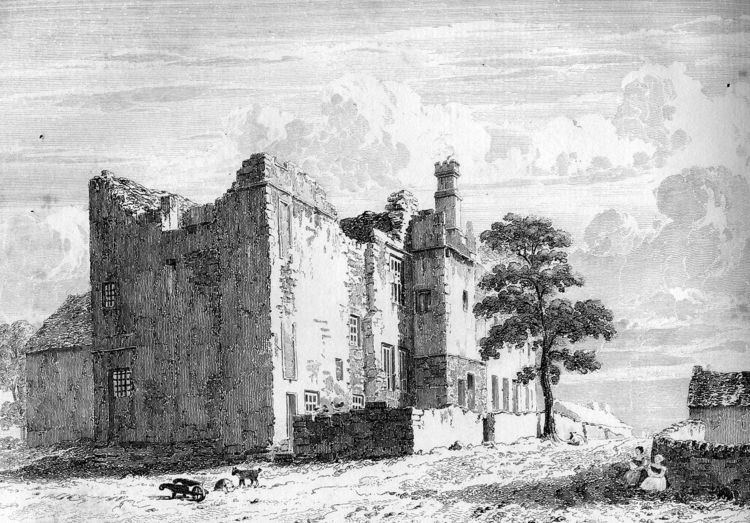Name John Holland Role Poet | Died December 28, 1872 | |
 | ||
Books Memorials of Sir Francis C, The History and Descripti, Memoirs of the Life and Minis, Sketch of the Life and Char | ||
John Holland (14 March 1794 - 28 December 1872) was an English poet and newspaper editor.
Contents
Life
Holland was born in a cottage in the grounds of the ancient Sheffield Manor in Yorkshire and initially trained by his father to follow him as a maker of optical instruments. He was however a bookish young man who taught himself Latin and soon began publishing poems of his own. These eventually brought him to the notice of local poet James Montgomery, editor of the Sheffield Iris, who published both articles and poems of his in the paper, although commenting on the latter's 'inaccuracies and imperfections' and remarking that 'they would be twice as good if they were as short again'. In 1813 Holland had become a Sunday School teacher and turned his hand to composing religious poetry and hymns. Some five years later he was appointed as a secretary of the Sheffield Sunday School Union.
In 1825, Holland was appointed as editor of the Sheffield Iris by new owner John Blackwell. In 1832, he moved to Northumberland to edit the Newcastle Courant, which Blackwell had bought, but returned to Sheffield in the new year and was elected curator of the Sheffield Literary and Philosophical Society, a position he held until his death. In 1835 he became co-editor of the Sheffield Mercury, serving until the paper was closed down by its new owner in 1848. Throughout his journalistic life, he wrote numerous works on botany, geology, local history and topography, in addition to biographies and sermons.
Works
In 1819 Holland wrote a long topographical poem on Sheffield Park and sent it to Montgomery for corrections and suggestions. Previously his output had largely been anonymous or appeared under his initials; the poem now became the first book published under his name and was followed by another in 1821 on the 'plague village' of Eyam. That year too he published the narrative poem "The Cottage of Pella" in imitation of Montgomery's "The Wanderer of Switzerland". Another strong influence on him at this time was the poet Thomas Campbell. Holland's poem "The Rainbow" (1820), published at the same time as one on the same subject by Campbell, was frequently anthologised as the latter's. Following this, Holland took Campbell's The Pleasures of Hope as the model for his own The Hopes of Matrimony (1822). As well as subsequent productions, a good deal of poetry was also included in some of his prose works such as the serialised The Old Arm Chair (1823), his botanical work Memoirs of the Rose (1824) and his consideration of the crucifixion, Cruciana (1836). Since he continued to write at length on all occasions, readers have to mine such gems as are there from among much that is derivative and diffuse.
1827: published a book with a very long title ("Crispin anecdotes : comprising interesting notices of shoemakers..." is about a quarter of it, but will suffice to give and indication of the contents). It was a compendium of many elements... history of shoes, writings of shoemakers, survey of the manufacture, etc of shoes. An energetic man, it would seem.
1835: published "The History and Description of Fossil Fuel, The Collieries and Coal Trade of Great Britain". The title page of that work further identifies him as the author of the "Treatise on Manufactures In Metal" said to be in three volumes as part of Lardner's Cabinet Cyclopaedia.
The "History... Coal Trade..." is an erudite but readable comprehensive survey of many aspects of the coal industry up to 1835, running to 478 pages. In the preface he confesses he is "neither a Geologist, a Collier, nor a Coal Merchant...", and prays for the reader's indulgence, until a more qualified author can undertake a similar survey. Despite his self-deprecation, the work is an extraordinary compendium of knowledge and information.
Poetical works
The Methodist (anonymously), Liverpool, 1819; Sheffield Park: a descriptive poem, Sheffield, 1820; annotated 2nd ed. 1859; The Cottage of Pella: a tale of Palestine, Sheffield, 1821; The Village of Eyam: a poem, Macclesfield, 1821; The Hopes of Matrimony, London and Sheffield, 1822; 2nd ed. 1836; Flowers from Sheffield Park: a selection of poetical pieces originally published in the Sheffield Iris, London and Sheffield, 1827; The Pleasures of Sight: a poem, Sheffield, 1829; Tyne Banks: a poetical sketch by a visitor in Newcastle, Newcastle, 1832; A Poet’s Gratulation, Sheffield, 1851; Diurnal Sonnets: 366 poetical meditations on various subjects, personal, abstract and local, comprising several founded on the more striking festivals and observances of the Christian year, Sheffield, 1852.
